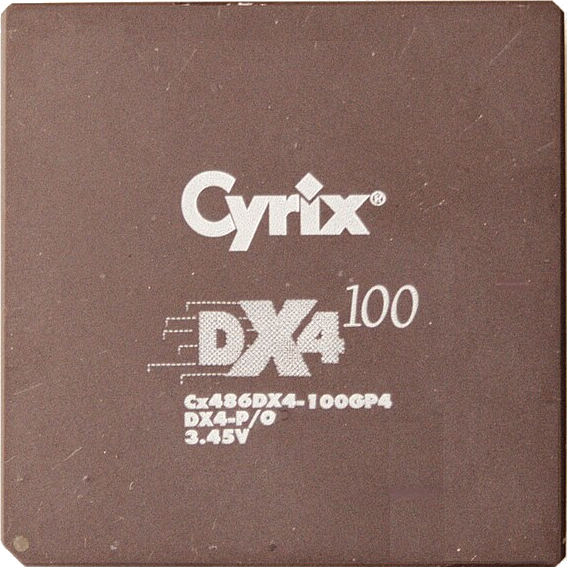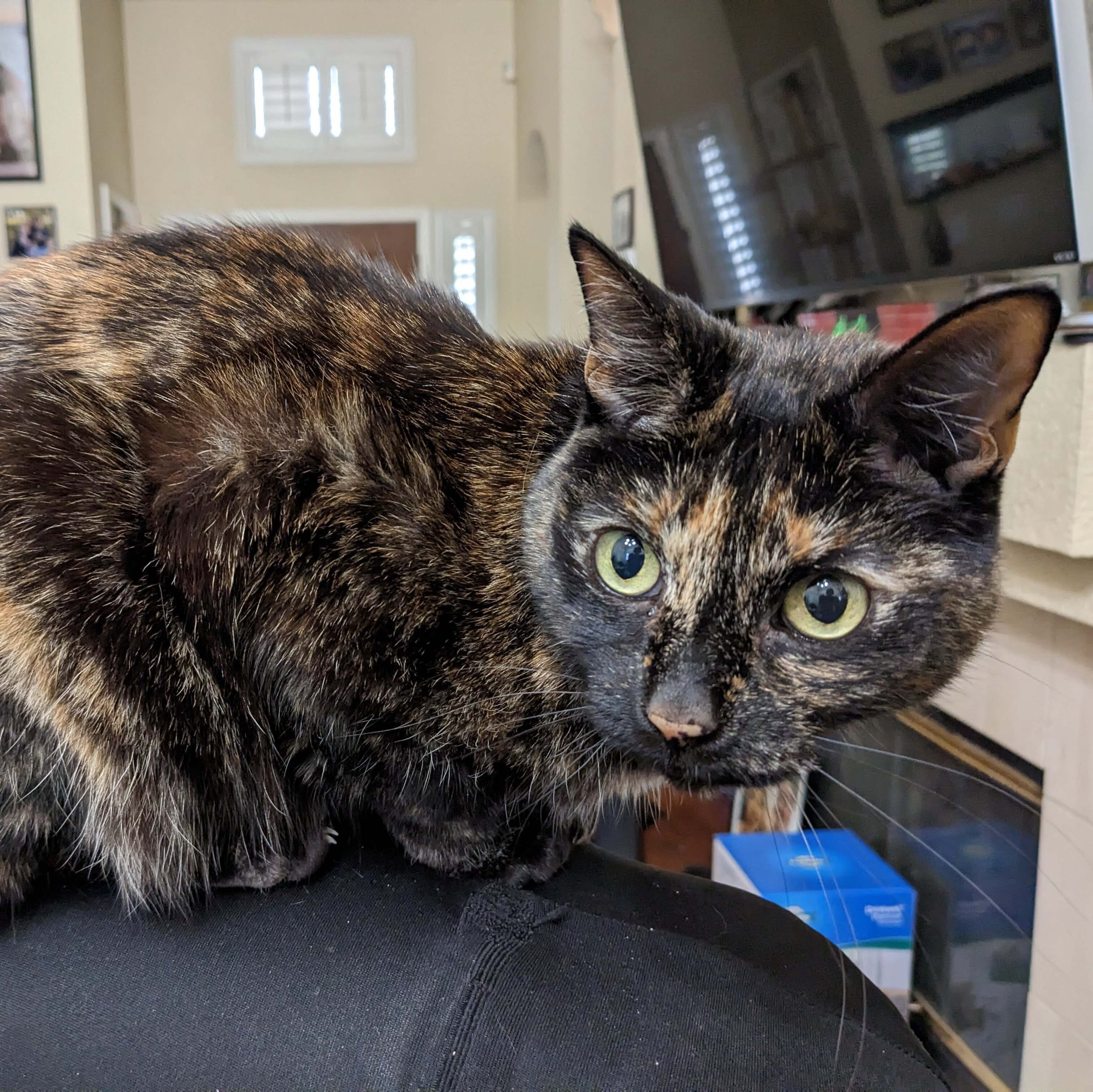I have backups on a backup hard drive and also synced to B2, but I am thinking about backing up to some format to put in the cupboard.
The issue I see is that if I don’t have a catastrophic failure and instead just accidentally delete some files one day while organising and don’t realise, at some point the oldest backup state is removed and the files are gone.
The other thing is if I get hit by a bus and no one can work out how to decrypt a backup or whatever.
So I’m thinking of a plain old unencrypted copy of photos etc that anyone could find and use. Bonus points if I can just do a new CD or whatever each year with additions.
I have about 700GB of photos and videos which is the main content I’m concerned about. Do people use DVDs for this or is there something bigger? I am adding 60GB or more each year, would be nice to do one annual addition or something like that.
The other thing is if I get hit by a bus and no one can work out how to decrypt a backup or whatever.
Documentation, documentation, documentation. No matter what system you have, make sure your loved ones have a detailed, image-heavy, easy to follow guide on how restorations work - at the file level, at the VM level, at whatever level you are using.
That being said, DVDs actually have quite a short shelf life, all things considered. I’d be more inclined to use a pair of archival strength USB NVME drive, updated and tested routinely(quarterly, yearly, whatever makes sense). Or even an LTO tape, if you want to purchase the drive and some tapes.
You can put your backups in something like VeraCrypt. Set an insanely long password, encoded in a QR code, printed on paper. Store it in the same secured location you store your USB drives (or elsewhere, if you have a security posture).
You may also consider, if money is not a concern, a cloud VPS or other online file storage, similarly encrypted. This can provide an easy URL to access for the less tech-savvy, along with secured credentials for recovery efforts. Depending on what your successors might need to access, this could be a very straightforward way to log into a website and download what they need in an emergency.
As much as I’m worried about family not being able to do it, I’m just as worried that I will do something dumb and lose the encryption key, losing everything. I am keen on the digital equivalent of a suitcase full of photos that could be stumbled upon.
I also already have borg backup set up to a backup drive and synced to the cloud (Backblaze B2).
For tape drives, is many thousands of dollars a normal price? Not sure I’m that keen.
If you buy your LTO drive new, then yes they rip you a new one, for sure! Buy it used…but it still will cost you a few hundred. Like I said, if money is not a concern. If losing the encryption key is a concern, then USB is still your best bet. Make two, keep them simple and unencrypted, stick em in two different safes, update them regularly. And print the documentation with pictures!
archival strength USB NVME drive,
Does such a thing exist? Ordinary flash storage is pretty bad at keeping its content when powered off for a long time, due to how flash memory works. I’d be curious about such drives.
I have not used them myself, but M-DISC sounds like what you’re looking for. There are a few other alternatives listed on that Wikipedia article, too.
Thanks, I think the risk here is that there may not be hardware to read it.
From the suggestions here I’m thinking a hard drive with USB connection would be best. It won’t last 50 years but instead I’d replace it every 5 years or so. I’d use an error resistant file system and plug it in each year to add the new files.
This way I also get the chance to move it to newer technology in future instead of a new hard drive. It would then only need to survive for some period of time after I last replaced it, so there’s a good chance of it remaining readable for most of my life.
Thanks, I think the risk here is that there may not be hardware to read it.
M-Disc DVDs are readable by ordinary DVD drives. So you could simply put a USB DVD drive alongside those backup M-Discs on the shelf.
Yeah that’s an idea. It does seem like I’d need a lot of disks though. And I don’t actually have a disk reader or writer at all at the moment.
You need a designated M Disc capable burner,yes. There are a few on the market though - they cost around 100-150 bucks usually.(In theory you can use a regular writer sometimes - I know people who do that,but why risk that?) I usually recommend the verbatim to my clients,they are dirt cheap and work flawlessly so far.
For reading the discs any regular data-capabale blue ray disk drive will do.
Like this? https://www.pbtech.co.nz/product/DVWVER4618789/Verbatim-43888-External-Slim-Bluray-Writer-Ultra-H
That’s NZD by the way, conversion rates are terrible at the moment so about halve it for USD, seems in the price range you said.
Ah, a Kiwi. Say hello to your sheep’s from me. (Sorry,former WA resident here, couldn’t resist)
But yeah, we are using exactly that model - and it’s currently only 20 NZD less from what I pay wholesale in Europe for it. So it seems like a pretty decent price.
The drive itself is solid. We currently have around 10, maybe 15, at our clients and it works without any hassle.
I personally recommend to store the disk’s offsite(I store them in a locked box in a bank vault) and some of my clients choose to store another drive there to be extra safe,but I personally don’t see the point.
🐑
Sweet, thanks, I think that’s a good plan. I am thinking duplicate disks, one on site one off site. I do have a cloud backup, but if I die in a house fire then having the offsite disks is a much better solution than the random B2 bucket.
Thanks for the help 🙂
I decided instead to use ZFS. Better protection than just letting something sit there. Your backups are only as good as your restores. So, if you are not testing your restores, those backups may be useless anyway.
ZFS with snapshots, replicated to another ZFS box. The replicated data also stores the snapshots and they are read-only. I have snapshots running every hour.
I have full confidence that my data is safe and recoverable.
With that said, you could always use M-disk.
I have automated backups including to cloud, but I want a separated manual system that cannot get erased if I mess something up (accidentally sync a delete, lose encryption key, forget to pay cloud bill). I have 3 2 1 but it’s all automated and backups are eventually replaced, if it’s not a critical failure I won’t necessarily know I’ve lost something.
Basically, I specifically want cold storage, and not cloud. I will only add, not delete from it. And I don’t want it encrypted.
Based on other conversations I’m planning on using duel disks mirrored, zfs, annual updates and disk checks with disks rotated out every 5 years (unless failing/failed). Handling the need for layman retrival of data by including instructions with the hard drives.
Basically, I specifically want cold storage, and not cloud. I will only add, not delete from it. And I don’t want it encrypted.
I have a client with a photographic studio. To give you an estimate, his data is around 14TB of mostly camera pictures with approximately 20 years or history and the owner believe it or not, relies on multiple external hard drives for cold storage, he has a 2TB Seagate thats like 2011-2012 old which still works.
To put in a cupboard tho, M disc is your best bet.
That sounds like a really good idea. You basically get the best of everything.
The cool thing about ZFS is the pool information is stored on the disks themselves. You can just plug them in and import the pools.
Tape. Amazon glacier if you’re okay with that.
And regular test restores. An untested backup is not a backup.
But when considering what I need to back up, I usually overestimate how much I or other people will care if it’s lost. Family photos are great, but what are the odds of someone saying "damn I wish we still had two dozen photos of that one barbecue?*
I use tape but haven’t been happy with my drive for a while, where do you get your drives? (Also OP I wouldn’t recommend tape until you cross the 10TB mark personally)
Yeah after looking at the price of a drive, I agree it doesn’t seem necessary at the level of data I have.
I don’t personally use tape, but I get most of my stuff from eBay. Tape drives are surprising expensive, even LTO-6 is going to run you a few hundred. But you still can’t beat the density and longevity.
For local backups it depends on what you want to have:
- The cheapest option is a usb or thumb drive. But you have to regularly plug it in and copy your backup on it.
- The lazy option is to buy a NAS and configure a backup job that regularly creates a backup. Versioned, incremental, differentials and full backups are possible as is WORM to add a bit of extra security. You can configure a NAS to only turn on specified times, do a backup and then turn off again. This will increase protection against encrypting malware. WORM also helps in this case.
Or just let it run 24/7, create backups every hour and install extra services on it like AI powered image analysis to identify people and objects and let it automatically tag your photos. Cool stuff! Check out QNAP and Synology or build a NAS yourself.
A NAS can also be configured to present its content in a LAN by itself. Any computer will automatically connect to it if the access isn’t secured by user/password or certificate.
I recommend buying a NAS.
So, I have a server that has a backup drive, automated backups, and replication to laptops as well as cloud storage in Backblaze B2. What I’m looking for is something completely separated from the automation that is a backup for if I screw up the automation, as well as a backup that a layman can access (i.e. no encryption, media that is usable by anyone). I have had some very bad experiences with flash drives but I am thinking a HDD with SATA->USB cable attached (I already have the cable).
From the other conversations in this thread mentioning many options, the hard drive option seems the best for my use case, but I’ve also been convinced of the benefit of printing out some physical photos as well, so my current plan is to get a big container, put a couple of mirrored hard drives in there (to validate against each other as protection against bit-rot), and print 100 photos each year to add to the container to have an extra layer of redundancy.
Printing the photos won’t help much. After 20 or so years they are all discolored. You can’t prevent that.
I think SSDs might be the best storage medium for you. Consumer-grade ssds have a 1 year data retention when powered off. That means at least once per year you have to turn it on and copy the data around one time to refresh the cells. This way it’ll probably last several 100 years.
You can’t exactly make it fool-proof. Outside people will never know what you did to create your backup and what to do to access it. Who knows if the drives file system or file types are still readable after 20 years? Who knows if SATA and USB connectors are still around after that time?
For example it is very likely that SATA will disappear within the next 10-15 years as hdds are becoming more and more an enterprise thing and consumers are switching to M.2 ssds.The printed photos are only there as an extra layer of redundancy in case everything else fails. It’s ok if they get discoloured a bit, it never put me off going through my grandparents’ suitcases of photos. Ideally the digital files survive, if not then at least there is something rather than nothing.
Is SSD really necessary? Everything I search up says SSDs have worse retention than HDD in cold storage. A couple TB of HDD is pretty cheap these days, and seems like a better cold storage option.
You can’t exactly make it fool-proof. Outside people will never know what you did to create your backup and what to do to access it. Who knows if the drives file system or file types are still readable after 20 years? Who knows if SATA and USB connectors are still around after that time?
Yes, so now I’m thinking a rotation cycle. About every 5 years replace the drives with new ones, copy over all data. If newer technology exists then I can move to that newer technology. This way I’m keeping it up to date as long as I can.
For example it is very likely that SATA will disappear within the next 10-15 years as hdds are becoming more and more an enterprise thing and consumers are switching to M.2 ssds.
Does this matter if I have a SATA->USB cable stored with it? Other than if USB A standards change or get abandoned for USB C, but that should be covered by the review every 5 years.
Is SSD really necessary? Everything I search up says SSDs have worse retention than HDD in cold storage. A couple TB of HDD is pretty cheap these days, and seems like a better cold storage option.
SSDs are by design less susceptible and more robust. No moving parts and able to work in much harsher conditions than hdds will ever be able to. The standard set by JEDEC requires every consumer ssd to have a 1 year data retention while powered off at 30 °C (I think). That’s the minimum it has to archieve but usually they are better than that. Do not buy the cheapest thumb drives because they contain the all the crap that wasn’t good enough to make ssds from it.
Btw you need to fire hdds up regularly too or the motor gets stuck. I think every 3-6 months was the recommendation.Yes, so now I’m thinking a rotation cycle. About every 5 years replace the drives with new ones, copy over all data.
Don’t make it flat every 5 years. Let a software monitor the SMART values of the drives and send notifications if the values indicate an increased change of a dying disc/ssd.
Does this matter if I have a SATA->USB cable stored with it?
Those are the first that fail, followed by the usb controller chip in the tray. Keep it as simple as possible. Removable trays are probably the best way but I’m not sure how much wear they can take.
Do not buy 2.5" drives. This class will die out soon™. There were no new hdds introduced in years and ssds are often replaced by M.2 ones because of the faster connection.
You are the first person who has recommended SSD for cold storage. Everyone else (including what I’ve googled) says HDD for cold storage, just spin up every year or two and they will be fine. Can you point me at further reading?
Don’t worry, I’ll SMART check the drives each year as I update as required.
As for types of drives dying out soon, I can reassess the situation every 5 years when I do drive replacement. I would be confident 2.5" drives will still be readable in 5 years.
Do not use an SSD for cold storage - it will fail. SSDs need to be plugged in every once to refresh the charge in their NAND, otherwise they’ll lose the data.
This is not a theoretical thing - I’ve had a good Samsung 850 Pro drive fail while being off for 2 years.
This is why I do my first-level of backups with
rsnapshot. It backs up to the plain filesystem using rsync and uses hard-links to de-dup between backups. No special filesystem, no encryption, restore is just an ‘rsync’ away.Yes my issue is that I seem to be replacing a drive somewhere every couple of years. I am keen for something that can be stored in a cupboard for years, preferably a decent chance at lasting decades.
Ah - I gotcha. That’s some terrible luck with drives.
I mean, there are a lot of drives. Two laptops with a drive each. A desktop/server with three drives, and a spare laptop used for Kodi is the current setup. I’m not counting but I think it’s three drives, one laptop, and one mobo since I started self-hosting perhaps 5 or 6 years ago.
The drives themselves, one was still under warranty, one was probably 3 or 4 years old, and the last was probably 6 or 8 and was in an old laptop and well used.
I think some of the drives have had a hard live while I messed around self-hosting, especially during my phase of trying out photo solutions.
In your scenario, I’d be looking at ZFS or BTRFS for your live data, especially when taking photos into account. They’ll self-repair files that may run into decay issues, which I’ve seen a lot of with photos in all formats. Since you already keep off-site backups, I’d then just keep an extra drive around that you snapshot to from time to time.
So my offsites are an incremental backup, but at some point the oldest version is gone. I am keen for a completely separate, long term snapshot of what I had that could be thrown in a cupboard, and any random family member clearing my house out as I get moved into a rest home at 108 can go through the photos and find a good one to put on my headstone.
I am also keen for protection against doing something dumb and losing everything (like losing my hard drive and finding out for some reason I can’t access my backups because I lost the encryption key because I put it in bitwarden and they shut down years ago and I never moved the key over because I forgot it was stored there).
ZFS and BTRFS both provide that functionality. Have a look into the features.
So the drive doesn’t need to be hot, I can just plug in once a year and it auto-repairs?
No, the “live” filesystems will repair themselves when they detect problems. They keep revisions of your data, and run checksums constantly. When they find a file has inadvertently changed without access, it will restore said files. Think of it like Mac “Time Machine”, but it’s just the filesystem . You can restore stuff from points in time when needed.
Just read up on it.
Thinking about this, the only ancient information we are still able to access is painted or edged on stone or clay. How about some sort huge wall with thousands of QRcode like engravings?
Reminds me of project Silica. Media historically was more durable (stone/ ink and cloth paper, etc) but had a low data density. As density increased, so did fragility
Just a hdd in usb caddy? IMHO good enough for 4 tier backup.
Yes this seems to be the general theme. Main issue is sorting out a file system. I can use a self-repairing one, to recover from long term storage issues, but then it likely won’t work in Windows which it may need to if I want a layman to be able to access it. So still some refinement of the plan but it’s coming together.
I’ve also decided to print some physical photos, aiming for 100 per year, and will put everything in a container together. The physical photos are for in case the container is lost for decades and the drives die, then there will at least be something.
If you need something which can withstand some bitrot on single drive, just use par2. As long is filesystem is readable, you can recover files even if bit of data get corrupted
I believe M-Disc to be the best consumer grade, optical solution out there. If you want to go commercial grade you are looking for LTO tapes, but your costs begin rising exponentially. If M-Disc claims are to be believed, they should last well longer than your requirement and be able to handle your data footprint using multiple, but not an unreasonable amount of discs.
No matter which solution you choose, if you are targeting multiple decades, you must save not only the media, but ideally the drive, computer and software used to archive. There is no guarantee that any of the existing technology will be relevant or backward compatible across several decades.
Just buy a spinning drive and call it a day. Follow 3-2-1 protocol and you’ll never lose anything . Check your longterm “cold storage” HDD’s 1-2 times a year. They should last 5-10 with little fuss. Some will go longer with no issues.
If you follow 3-2-1 you’ll never lose anything and you only have to spend a few hours a year thinking about backups.
This is actually terrible advice. WORM media exists for a reason and telling someone with a mere 3-2-1 he will never loose data is absolutely irresponsible.
Neither is it a good idea to use regular hard-disk for offsite-cold storage. A really really bad idea.
If you follow proper 3-2-1 you are living the four nine’s dude. A “regular” spinning HDD can last a decade or more without fuss (define “regular” please…?)
You will not lose all 3 backups at once. When one goes down, you replace it. There’s a reason this is industry standard for media production and beyond. “Irresponsible”? Please.
3-2-1 is the minimal consensus and not recommended anymore for everything you need to reliably have access to after a long time - the fact that some ransomware viruses intentionally have a very time they are laying low to decrypt old and rarely used files is one of the main reasons. Healthcare, finance, taxation, accounting, etc. are all sectors that heavily rely on WORM media and long term tape storage.
You are right that a spinning disk often can work for 10 years - but there is a reason they are exchange earlier in a professional setting. Not all of them will. And you were talking about cold storage disks. This is something even the manufacturers do not recommend - for a reason.
Dude this isn’t healthcare this is a person’s home backups. Are you kidding me?
And yes you swap them earlier, I am just saying what is possible. Not that you should buy 1 drive, sit around 10 years, and expect everything to be fine.
You’re being very antagonistic here as well. I’m not sure what all the hostility is about. Either way I bet you if you follow 321 for your home backups you’ll never lose a single thing. Idk what you do at home and what you’re storing but for the vast majority of people that is more than enough.
I have 3 2 1 but I want the equivalent of a suitcase of photos in the cupboard. No family member is gonna be cleaning out my house as they move me to a rest home and stumble upon my Borg backup in B2 object storage. And if they do they won’t have the key. I want something a bit closer to physical.
I think an extra drive for cold storage is a good idea. My main backups are automated, this one I can add any new files done in the last year once a year, then back in the cupboard. I just need to make sure I’m rotating the drives so I don’t have the same one in storage for 50 years, and instead buy new ones every 5 years or so.
If this is your fear, why not just have a will or something that specifically describes what to do and where to go?
Exactly. I have a document for my SO that describes what to do if I pass (where the money is, how the WiFi is set up, various important accounts, etc). It’s not a will (nothing about who gets what, though that’s assumed by the state to be my SO, or my kids equally if we pass together), just a document that explains the stuff I handle.
I have such a document, but it’s not quite the same. I’m just as worried about my dumb ass losing the borg key and all data along with it…
I’m thinking a clearly labelled hard drive with instructions, rotating the hard drive with a new one every 5 years or so.
ZFS with automatic snapshots and scrubbing. This will keep as many and as old snapshots as your like. It’ll ensure the files don’t rot. It’ll ensure the media doesn’t die, so long as you have enough redundancy and you replace disks as they die. This is what I’d trust for long term storage because I think I understand how and why it works. It should last as long as I feed it disks. If I delete something, I should be able to restore it from a snapshot. The hardware doesn’t need to be anything fancy. Just a Pi 4/5 with a couple of WD Elements would be fine. Could add more disks for more redudnancy. I’m running 2-disk residency.
You don’t have to touch the software if it’s not exposed to the Internet. Whatever works today on it will work 20 years from now, so long as the hardware works. A couple of spare Pis, SD cards and power supplies should let it last for decades.
I’d rather cold storage but am thinking of looking along these lines, ZFS or btrfs on a standard HDD that I add files on to once a year and replace the disk every few years.
I have a standard backup setup I just want something that is more point in time and not connected to all the automation, in case I automatically delete everything.
Yup, turn it on, let it do a scrub, then turn it off. I’d still use redudnancy though. Not merely to cover the case of the drive failing, but also to cover the bit rot use case. It’s exceedingly unlikely bits to rot at the exact same spot on two or more disks. When ZFS finds a checksum mismatch during a scrub (which indicates bit rot), it’ll be able to trivially recover the data from the drive where the checksum matches. It’ll then rewrite the rotten part.
Would that be two disks under a type of RAID or does ZFS have something?
With 2 disks that would be type mirror in ZFS-speak, completely built-in. Equivalent to RAID1 in terms of hardware fault tolerance.
You could do a 3-disk mirror or n-disk mirror really. The RAID5/6 rough equivalents are called RAIDzN where N is the number of disk failures they tolerate. E g. RAIDz1, RAIDz2, etc. You probably want a mirror unless you need more space than a single disk provides.
Ah thanks, that gives me something to research.
I usually use a dehydrator for ~3 days on my drives to make them shelf stable. So far I haven’t had any issues.
This will do nothing at all. Drives don’t die by rust. They usually die because the motor somehow can’t get the discs to spin. Very often dry lube is the reason. That can occur if you leave the drive off too long.
I’m thinking of using a HDD and keeping it at work, which is climate controlled. I’d bring it back every few months to sync the latest.
Since it’s constantly being used, I’m pretty confident it’ll be usable as a backup if my NAS fails, so it only needs to be “shelf stable” for a few months at a time. If you’re retired or something, a safe deposit box at your local bank should do the trick.
If it’s powered off, you’ll have no idea when it dies. And they do die just sitting there.
I’ve actually had more failures of drives sitting around than ones running constantly.
But I will because it won’t work the next time I take it home to sync. The chance that it’ll fail during the few months between a sync and an emergency is incredibly low.
I wouldn’t leave it on a shelf for years, just a few months at a time (approximately quarterly).
For photos? Archival prints. As a bonus, you also get a cool album to reminisce later in life.
I don’t want to sort through the 50k photos, and can’t print videos. I’m hoping in 10 or 20 years I’ll be able to feed it into AI to spit out all the best ones, then I’ll consider it.
We do have photos printed, but only a very small percentage of the total.
Completely understandable. I say this as someone with way more photos in digital only media than I should.
I’ve decided I should have a small number of physical prints, as extra redundancy. I’m thinking I’ll print 100 each year to store with the hard drive backup.











